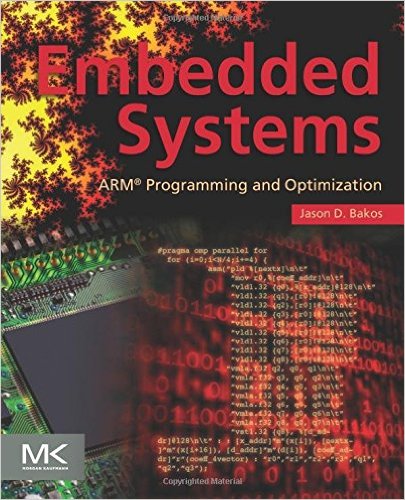Embedded Systems:
ARM Programming and Optimization


Front Cover:
Embedded Systems: ARM Programming and Optimization combines an exploration of the ARM architecture with an examination of the facilities offered by the Linux Operating System to explain how various features of program design can influence processor performance. It demonstrates methods by which a programmer can optimize program code in a way that does not impact its behavior but improves its performance. Several applications, including image transformations, fractal generation, image convolution, and computer vision tasks, are used to describe and demonstrate these methods. From this, the reader will gain insight into computer architecture and application design, as well as gain practical knowledge in the area of embedded software design for modern embedded systems.
Covers three ARM instruction set architectures, the ARMv6 and ARMv7-A, as well as three ARM cores, the ARM11 on the Raspberry Pi, Cortex-A9 on the Xilinx Zynq 7020, and Cortex-A15 on the NVIDIA Tegra K1 Describes how to fully leverage the facilities offered by the Linux operating system, including the Linux GCC compiler toolchain and debug tools, performance monitoring support, OpenMP multicore runtime environment, video frame buffer, and video capture capabilities Designed to accompany and work with most of the low cost Linux/ARM embedded development boards currently available.
Back Cover:
The modern consumer electronics industry as we know it owes much of its success and popularity to two technologies: the ARM processor and the Linux operating system. ARM processor technology powers nearly all modern mobile devices―and most of these processors run the Linux operating system. It’s no exaggeration to say that having an understanding of embedded system design and development from the context of ARM and Linux technology is an important asset in today’s world.
This textbook combines an exploration of the ARM architecture with an examination of the facilities offered by the Linux operating system to explain how various features of program design can influence processor performance. It demonstrates methods by which a programmer can make changes to code without changing program semantics, but have a significant impact on code performance. Several applications, including image transformations, fractal generation, image convolution, and computer vision tasks, are used to describe and demonstrate these methods. From this, the reader will gain insight into computer architecture and application design, as well as gain practical knowledge in the area of embedded software design for modern embedded systems.
